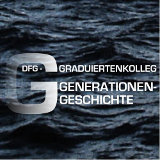Abstract Gudrun Weiland
'Tom Shark' , 'Frank Allan', 'John Kling' and 'Harald Harst' - they were the most popular dime novel heroes in the 1920s and 1930s. The German dime novel (Groschenhefte, Heftroman), once enormously popular with its readers, has been neglected for most of its history by scholars and libraries. Nevertheless, the dime novel was a prolific and innovative form of popular literature.
This project deals with dime novel series (Groschenhefte, Heftromane) and their readers in the 1920s and 1930s. The dime novel will be analysed as a production and distribution system as well as a textual form. One important aspect of this work is to examine how audiences are both shaped by and shape literature; how the serial presentation of texts in a periodical medium is narratively used; how the genre of detective fiction is created, and re-created, by authors, publishers and readers; and how literary characters are narratively constructed and become popular heroes. The textual forms, genres and characters of dime novels as well as the dime novel as an material object are cultural artefacts linked with the original context from which they came. They occupy their own place in time and they are part of the identity of readers relating them to their place in time: Literature is formed by - and form the generation identities of audiences.
This project aims to connect the textual construction of reading audiences (model reader) and empirical issues of audience constitution and reading practices. Approaches from narratology, audience research and history of the book will be synthesised.

